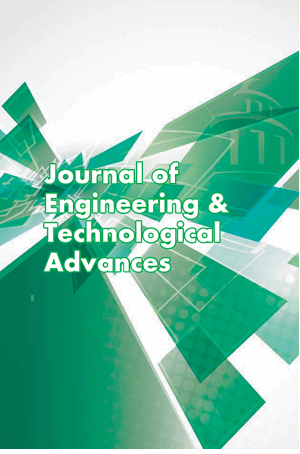Abstract
This study presents a modified methodology to estimate various low flow hydrological parameters of various streamflow stations in Malaysia. This is followed by a subsequent estimation of low flow quantum using a modified storage-yield-reliability (SYR) model. These low flow estimates are crucial in managing the water resources in a river basin. Furthermore, it is also stipulated in the provision of environmental flow (EF) prescription for prior releases in water resources management in Malaysia. The database (90 streamflow stations in Malaysia) adopted in this paper is abstracted from the National Water Resource Study review. This paper presents a novel methodology for low flow yield estimation using Vogel and Kuria's modified version of the SYR model. The modified version adopts the same formulation and structure as the original multiple regression equation, but with an additional calibration step for deriving the calibrated parameters. The correlation between average annual flow and low flow quotient shows a moderately higher coefficient of determination (r2), varying from 0.724 to 0.850 for various hydrological regions in Malaysia. In addition, fair and consistent correlation is demonstrated, falling within a factor of two line visually using the respective coefficient of determination of the regression equations for various hydrological regions in Malaysia. However, minor noises and fluctuations are observed between the estimated results and the observed dataset and records. This novel modified SYR model's significant practicality and utility are vividly shown, and it can be readily used in the pre-feasibility water resources study.
References
Baeza Sanz, D., & Matías, A.G. (2023). A comparative analysis of methods for establishing environmental flows in a Mediterranean watershed: suggestions for management. Journal of Water and Climate Change, 14(4), 1089-1111. https://doi.org/10.2166/wcc.2023.246.
Heng, H.H., & Hii, C.P. (2011). Review and Comparison of Environmental Flow Derivation in Malaysia. IUP Journal of Environmental Sciences, 5(1).
Heng, H.H., Hii, C.P., Pan, W.F., & Siaw, F.L. (2017). Dam yield assessment in Selangor 2016. Journal of Engineering & Technological Advances, 2(1), 57-77. https://doi.org/10.35934/segi.v2i1.
Heng, H.H., Hii, C.P., Pan, W.F., & Siaw, F.L. (2018). Reservoir yield analysis using multiple variable regression screening model and its comparison: 28 water supply dams in Malaysia. Journal of Engineering & Technological Advances, 3(2), 35-74. https://doi.org/10.35934/segi.v3i2.
Hirji, R., & Davis, R. (2009). Environmental flows in water resources policies, plans, and projects: findings and recommendations. World Bank Publications.
Jain, S.K. (2012). Assessment of environmental flow requirements. Hydrological Processes, 26(22), 3472-3476.
Jurutera Jasa (Sarawak) Sdn Bhd. (2009). The Sarawak Integrated Water Resources Management Master Plan Study: Volume 1 Executive Summary. State Government of Sarawak.
Katz, D. (2006). Going with the flow: Preserving and restoring instream water allocations. The world’s water: 2006–2007: The biennial report on freshwater resources, 29-49.
Kementerian Sumber Asli dan Alam Sekitar Malaysia. (2011). Review of the National Water Resources Study (2000–2050) and Formulation of National Water Resources Policy: Final Report (Vol. 1).
Kuria, F.W., & Vogel, R.M. (2014). A global reservoir water supply yield model with uncertainty. Environmental Research Letters, 9, 095006.
Liu, X., Song, H., Ren, Y., Yu, M., Liu, Y., Wang, D., Xia, F., Tang, C., Tian, L., Dong, W., & He, J. (2024). Ecological environmental flow estimation for rivers with complicated hydraulic conditions. Water Science & Technology, 89(2), 357-367.
McMahon, T.A., Pegram, G.G., Vogel, R.M., & Peel, M.C. (2007). Review of Gould–Dincer reservoir storage–yield–reliability estimates. Advances in Water Resources, 30(9), 1873-1882.
Mohamad Arbai, N.A., & Irie, M. (2025). Estimations of environmental flow requirements in a tropical region. EGU General Assembly 2025, Vienna, Austria, 27 April - 2 May 2025. https://doi.org/10.5194/egusphere-egu25-19980.
Pal, S., & Saha, T.K. (2022). Flow forecasting and measuring environmental flow using machine learning techniques. https://doi.org/10.21203/rs.3.rs-1758159/.
Rossel, V., & de la Fuente, A. (2015). Assessing the link between environmental flow, hydropeaking operation and water quality of reservoirs. Ecological Engineering, 85, 26-38.
Sidek, L.M., Zaki, A.Z.A., Mustaffa, Z., Ibrahim, M.I.H., Muda, Z.C., Thiruchelvam, S., & Basri, H. (2013). Hydrological assessment for mini hydropower potential at Sungai Pahang@ Temerloh. In IOP Conference Series: Earth and Environmental Science, 16(1), 012046. IOP Publishing. http://dx.doi.org/10.1088/1755-1315/16/1/012046.
Toriman, M.E. (2010). Assessing environmental flow modeling for water resources management: A case of Sg. (River) Pelus, Malaysia. Nature and Science, 2(8), 74-81.
Water Resources Consulting Services. (1994). Water Resources Master Plan (WRMP), Negeri Sabah. Jabatan Air Negeri Sabah, Malaysia.
Yin, X.A., Mao, X.F., Pan, B. Z., & Zhao, Y.W. (2015). Suitable range of reservoir storage capacities for environmental flow provision. Ecological Engineering, 76, 122-129.

This work is licensed under a Creative Commons Attribution-NonCommercial-NoDerivatives 4.0 International License.
Copyright (c) 2025 Array

